What is On-Page SEO and Why is it Crucial for Your Online Success?
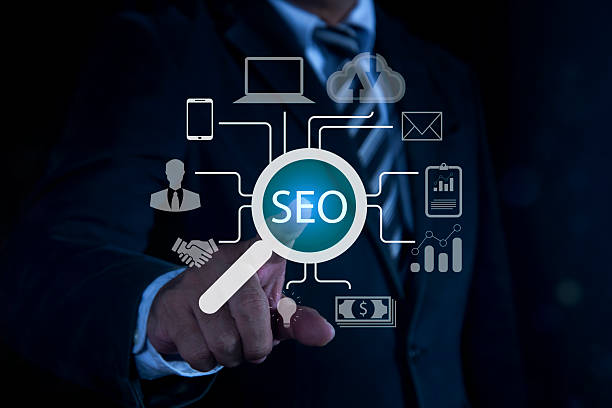
On-Page SEO, or on-page optimization, is a set of techniques and actions directly applied to your website’s content and source code to improve its ranking in search engine results pages.
Unlike Off-Page SEO, which deals with signals outside your website (such as backlinks), #On_Page_SEO encompasses full control over your website.
This includes optimizing titles, meta descriptions, headings, content, images, URL structure, and internal links.
The main goal of this process is to help search engines better understand the topic and value of your pages.
When Google understands your content well, it can correctly show it to users relevant to their searches.
The importance of On-Page SEO for online success is undeniable.
Without a strong foundation in on-page SEO, even the best off-page SEO strategies may be ineffective.
This optimization not only helps search engines crawl and index your content better, but also improves user experience (UX).
When your pages are well-structured, load quickly, and have relevant and organized content, users will have a better experience, leading to increased time on site and reduced bounce rate.
These signals, in turn, indicate to search engines that your content is valuable, ultimately leading to improved #Google_ranking and increased organic traffic.
Proper optimization sends strong signals to search engines that you are a reliable and relevant resource for user searches.
Did you know that 94% of users’ first impressions of a business are related to its website design? Transform this first impression into an opportunity for growth with professional corporate website design by **Rasawb**.
✅ Attract more customers and increase sales
✅ Build credibility and trust in the eyes of your audience⚡ Get a free website design consultation!
Discovering the Treasure Trove of Keywords for Effective On-Page SEO
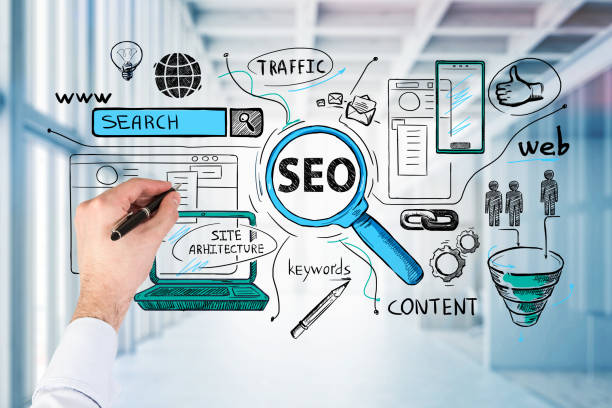
Keyword research is the backbone of any successful On-Page SEO strategy.
Before you can optimize your content, you need to know what your users are looking for and what phrases they use to search.
#Keyword_research is not just about finding keywords with high search volume, but also about finding keywords that match user intent and can bring quality traffic to your site.
For this purpose, you should pay attention to different types of keywords: short-tail keywords (like “SEO”) which have higher search volume but also more competition, and long-tail keywords (like “how to improve my website’s on-page SEO?”) which have lower search volume but indicate a more specific intent and have less competition.
Various tools such as Google Keyword Planner, Ahrefs, Semrush, and Moz Keyword Explorer help you find suitable keywords.
In this process, you should pay attention to metrics such as search volume, competition, and the relevance of the keyword to your content.
After identifying main and secondary keywords, you should naturally incorporate them into your page titles, subtitles, body text, and meta descriptions.
Overusing keywords (keyword stuffing) will not only not help your ranking but can also lead to penalties from Google.
The goal is to create content that is valuable to users and understandable to search engines.
This intelligent approach to on-page optimization ensures that your efforts for #successful_search are effective and sustainable.
User intent and answering their questions are the cornerstone of this research.
The Art of Creating Optimized Content for On-Page SEO and Audiences
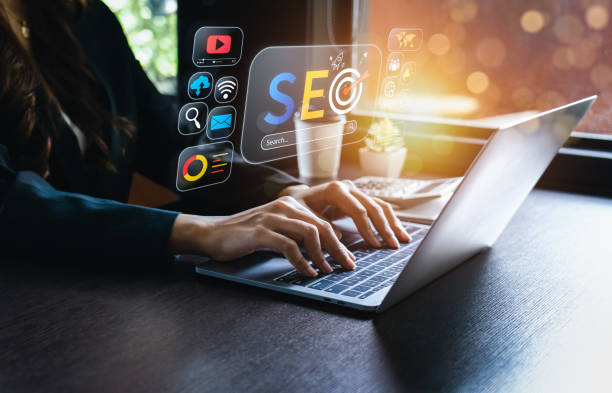
Content is the king of On-Page SEO.
No SEO strategy will succeed without quality and relevant content.
Creating content that is both optimized for search engines and engaging for audiences requires a combination of technical SEO knowledge and writing skills.
Your content should not only address user needs but also cover the topic comprehensively and thoroughly.
This includes providing accurate information, using examples, and answering potential user questions.
To achieve this, using keyword research in the early stages of content production is crucial to ensure that your content aligns with actual user searches.
When writing, try to naturally distribute your primary and secondary keywords throughout the text, but never resort to keyword stuffing.
Keyword density should appear natural.
Content structure is also highly important.
Using appropriate headings (H1, H2, H3, etc.), short paragraphs, bulleted and numbered lists increases text readability.
This organization also helps search engines better understand the structure and main topics of your content.
Furthermore, the concept of E-E-A-T (Expertise, Experience, Authoritativeness, Trustworthiness), introduced by Google, emphasizes the importance of the author’s and content’s expertise, experience, authority, and trustworthiness.
These factors directly influence the quality and ranking of your content in internal optimization and show that you are a reliable source.
#Quality_content and structured content are the foundation of any successful on-page SEO strategy.
| Optimization Element | Description | Importance in On-Page SEO |
|---|---|---|
| Keywords | Natural use of primary and secondary keywords relevant to the topic throughout the text. | Very Important: Helps search engines understand and relate content to user searches. |
| Readability and Structure | Using short paragraphs, headings, lists, and simple sentences to improve readability. | Important: Increases user experience and visitor retention on the site. |
| Content Length | Comprehensive and complete content that addresses all aspects of the topic (usually more than 500 words). | Important: A signal to search engines regarding the depth and comprehensiveness of the content. |
| Originality and Freshness | Unique content and regular information updates. | Crucial: Prevents penalties for copied content and provides reliable information. |
| Call-to-Action (CTA) | Encouraging phrases for specific actions (such as purchase, registration, further reading). | Moderate: Improves conversion rates and increases user engagement. |
Technical Elements of On-Page SEO: Tags and Page Structure

In addition to content, the technical elements of each web page also play a vital role in On-Page SEO.
These elements help search engines correctly index and rank your content.
One of the most important of these elements is the Title Tag, which is the clickable headline in search results.
This tag should include the main keyword of the page and be attractive to encourage users to click.
The optimal length for a title tag is usually between 50 and 60 characters.
Another element is the Meta Description, which provides a brief summary of the page’s content.
Although meta descriptions do not directly affect ranking, they can increase the click-through rate (CTR) because users see a summary of the content before entering the page.
Using the main keyword in the meta description and writing engaging and persuasive text is very important.
Headings (H1, H2, H3, etc.) also help organize your content and assist search engines in understanding the structure and importance of different sections of the text.
H1 should contain the main keyword and serve as the main title of the page, while H2 and H3 are used to organize subsections.
URL structure is also important; short, descriptive, and keyword-rich URLs are more understandable for both users and search engines and help strengthen internal optimization.
These technical elements form a strong foundation for a successful #On_Page_SEO strategy.
Are you tired of losing business opportunities due to not having a professional corporate website?
Rasawb, with its professional corporate website design, helps you:
✅ Build a powerful and reliable image for your brand
✅ Convert website visitors into loyal customers
⚡ Get a free consultation now!
The Power of Images and Multimedia in On-Page SEO
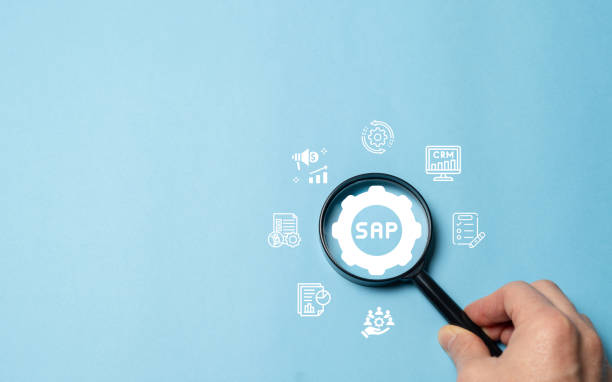
Images, videos, and other multimedia elements not only enhance the visual appeal of your website but also play a significant role in On-Page SEO.
Optimizing these elements can help improve user experience and your ranking.
The first step in image optimization is using appropriate Alt Text.
Alt text is a short, accurate description of the image content that is displayed if the image fails to load and is also read aloud for visually impaired users.
Using relevant keywords in alt text helps search engines understand the image’s topic and display it in image searches.
Image file size is also of high importance.
Large images can significantly slow down page loading speed, which negatively impacts user experience and SEO ranking.
Compressing images without significant quality loss and using appropriate formats (such as WebP for the web) is recommended.
In addition to images, using videos can also help increase user time on page and be a positive signal for search engines.
Video optimization includes adding titles, descriptions, and keyword-related tags, as well as creating Video Sitemaps.
Proper utilization of multimedia elements in your On-Page SEO strategy not only helps increase visual appeal but also allows search engines to understand your content more comprehensively.
This leads to increased #organic_traffic and overall SEO performance improvement.
Internal Linking: A Way to Guide Crawlers and Users
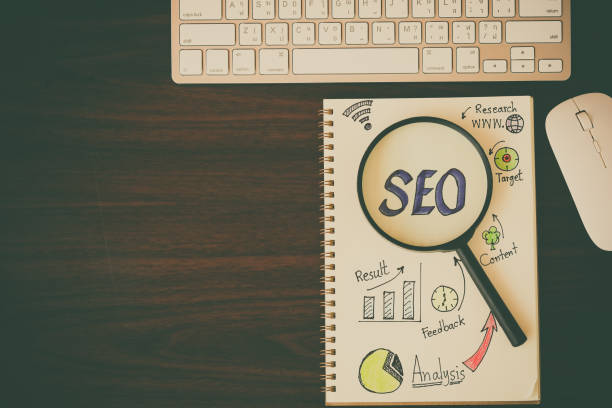
Internal linking is one of the most powerful yet often overlooked aspects of On-Page SEO.
Internal links are links that point from one page on your website to another page on the same website.
The main goal of internal linking is to improve user navigation, distribute authority (PageRank or link equity) across the website, and help search engines discover and index new and existing pages.
When your important pages are connected by many internal links, search engines better understand the importance of those pages.
An effective internal linking strategy involves using descriptive and relevant Anchor Text.
Anchor text is the clickable text and should include keywords relevant to the destination page.
For example, if you are linking to a page about “gaming laptops,” the anchor text “best gaming laptops” will be much more effective than “click here.”
Furthermore, the structure of internal links should be logical and hierarchical.
Main pages should link to sub-pages and vice-versa to create a strong link network.
This not only allows search engine crawlers to easily navigate your site and discover all pages but also helps users quickly find the information they need.
Improving #internal_linking is a fundamental part of #On_Page_SEO optimization for both large and small sites, as it directly impacts the discoverability and understanding of your content by search engines and, consequently, your ranking.
User Experience and Core Web Vitals: Cornerstones of Modern On-Page SEO
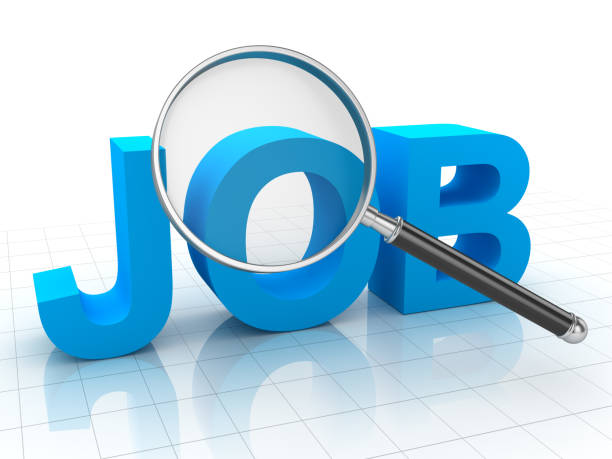
In today’s world, user experience (UX) and its metrics, such as Core Web Vitals, have become one of the most important ranking factors in On-Page SEO.
Google increasingly emphasizes the importance of providing an excellent user experience, and sites that meet these criteria are rewarded.
Core Web Vitals are a set of metrics related to page loading speed, interactivity, and visual stability, comprising three main metrics: Largest Contentful Paint (LCP), First Input Delay (FID), and Cumulative Layout Shift (CLS).
LCP measures the time required to load the largest content element on the page.
FID indicates the site’s responsiveness to the user’s first interaction, and CLS examines the visual stability of the page, meaning that page elements do not shift unexpectedly during loading.
Improving these metrics directly impacts your On-Page SEO, as faster and more stable sites provide a better user experience, and consequently, search engines are more inclined to rank them higher.
Optimizing images, reducing unnecessary code, utilizing browser caching, and improving server response are among the actions that should be taken to enhance Core Web Vitals.
Furthermore, website responsiveness (Mobile-friendliness) is also crucial for UX, as a large portion of searches occur via mobile devices.
Paying attention to these points elevates on-page optimization to a higher level of quality and efficiency and turns #site_speed into a competitive advantage.
| Metric | Description | Importance for SEO | Good Score |
|---|---|---|---|
| Largest Contentful Paint (LCP) | Time to load the largest visual content on the page. | Most important factor for page loading speed experience. | Less than 2.5 seconds |
| First Input Delay (FID) | Time for the page to react to the user’s first interaction (e.g., click). | Measures website interactivity and responsiveness. | Less than 100 milliseconds |
| Cumulative Layout Shift (CLS) | Measures the visual stability of the page (amount of unexpected element shifting). | Reduces user dissatisfaction caused by sudden content shifts. | Less than 0.1 |
| Mobile-Friendliness | Usability and correct display of the website on mobile devices. | Crucial, due to the increase in mobile searches and Google’s mobile-first indexing. | Passes Google’s Mobile-Friendly Test |
Schema Markup and Structured Data: Increasing Visibility in Search
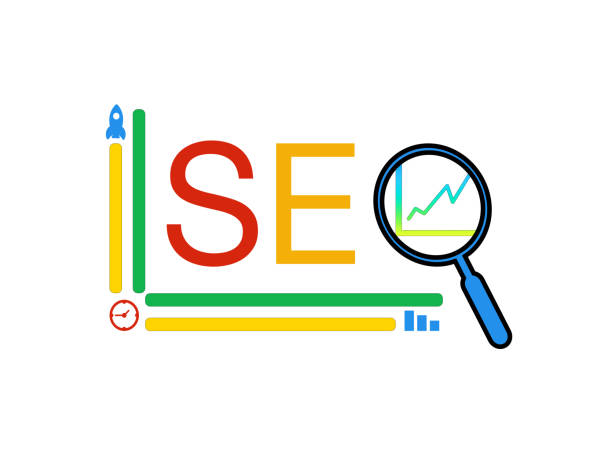
Schema Markup and structured data are small pieces of code added to your website to help search engines better understand your content and display it in a richer, more informative way in search results.
This advanced On-Page SEO helps your website appear as a Rich Snippet or Rich Result, which can significantly increase your click-through rate (CTR).
For example, a recipe can include information such as cooking time, calories, and user ratings, which are directly visible in search results.
There are various types of schema, including schema for products, reviews, articles, events, people, organizations, and frequently asked questions (FAQ).
Using the appropriate schema for your content type helps Google highlight specific and relevant information.
Schema markup implementation is typically done through JSON-LD code in the <head> or <body> section of the page.
Google provides tools such as the Rich Results Test to check the correctness of schema implementation.
Proper use of structured data makes your website more understandable to search engines and allows it to stand out among a multitude of results.
This means increased visibility, increased targeted traffic, and ultimately, overall improvement in On-Page SEO.
#Schema_markup is a powerful tool to increase your website’s attractiveness in search results pages.
Did you know your company’s website is the first point of contact for 75% of potential customers?
Your website is the face of your brand. With **Rasawb**’s corporate website design services, build an online presence that earns customer trust.
✅ Create a professional and lasting image for your brand
✅ Attract target customers and increase online credibility
⚡ Get a free consultation from **Rasawb** experts now!
Measuring and Analyzing On-Page SEO: Your Success in Numbers

No On-Page SEO strategy is complete without continuous data measurement and analysis.
To understand whether your efforts have been effective and to identify opportunities for improvement, you must carefully monitor your website’s performance.
Analytical tools such as Google Analytics and Google Search Console provide you with vital data.
Google Analytics offers information about website traffic, user behavior (such as bounce rate, time on page, pages visited), and conversion rates.
This data helps you understand how users interact with your content.
Google Search Console provides more direct information about SEO performance, including keywords users have used to find you, your website’s position in search results, the number of clicks and impressions, and crawl and indexing errors.
This tool allows you to identify and resolve technical On-Page SEO issues.
Other important metrics to consider include: organic traffic (number of visitors from search engines), bounce rate (percentage of visitors who leave the site after viewing one page), and time on page.
Regular analysis of this data allows you to evaluate the effectiveness of your on-page SEO strategies, identify weaknesses, and take necessary actions for further optimization.
This continuous improvement cycle ensures your long-term success in SEO.
#Data_analysis and #performance_monitoring are the heart of a successful SEO campaign.
Common Mistakes and the Future of On-Page SEO: Prepare Your Site for Tomorrow
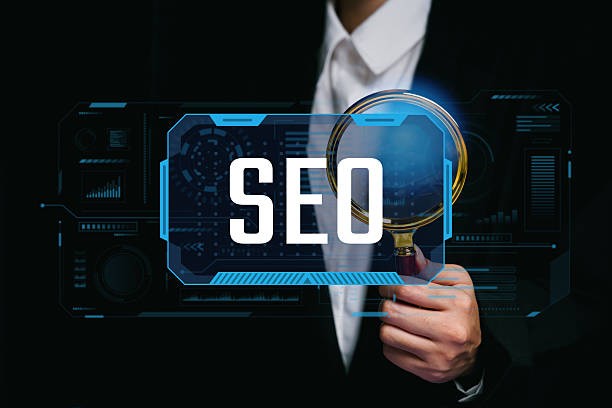
On the path of On-Page SEO, there are some common mistakes that can render your efforts fruitless.
Avoiding these mistakes and being aware of future trends is crucial for maintaining your website’s ranking and growth.
One of the biggest mistakes is Keyword Stuffing.
Excessive and unnatural use of keywords is not only unpleasant for users but can also lead to penalties from Google.
Your content should be natural and valuable, not merely crammed with keywords.
Another mistake is thin content or low-value content that does not provide sufficient or unique information.
This type of content is usually ignored by search engines.
The future of On-Page SEO is rapidly changing.
The emergence of Artificial Intelligence (AI) and Machine Learning in Google’s algorithms has elevated search engines’ understanding of content to a more sophisticated level.
Now, Google pays attention not only to keywords but also to the true meaning of the content and the user’s intent behind searches.
Voice search and visual search are also gaining popularity, and websites must prepare for these changes.
The importance of E-E-A-T (Expertise, Experience, Authoritativeness, Trustworthiness) is increasing, meaning your content should be produced by experts and be trustworthy.
Ultimately, On-Page SEO is not a static process but a continuous and evolving effort.
By avoiding common mistakes and keeping pace with #algorithm_changes and new trends, you can ensure that your website remains competitive in the long run and achieves the best results.
Frequently Asked Questions
| Question | Answer |
|---|---|
| What is On-Page SEO? | On-Page SEO involves optimizing elements directly under your control and within your website. Its goal is to help search engines better understand the page content and improve its ranking. |
| Why is On-Page SEO important? | On-Page SEO provides clear signals to search engines about the page content, improves user experience, and increases the chance of attracting organic traffic. |
| What are the most important On-Page SEO factors? | Keywords, Title Tag, Meta Description, URL structure, quality content, image optimization, and internal links are among the most important factors. |
| What is the role of the Title Tag in On-Page SEO? | The Title Tag is one of the most important signals for search engines and users, specifying the main topic of the page. It should include the main keyword and be engaging. |
| How important is the Meta Description? | The Meta Description does not directly affect ranking, but by encouraging users to click, it can improve the click-through rate (CTR). |
| How to optimize images for On-Page SEO? | By using descriptive file names, appropriate Alt Text containing keywords, compression to reduce size, and correct dimensions. |
| What is the effect of Internal Links on SEO? | Internal links help search engines discover and index site pages, distribute authority (PageRank) throughout the site, and improve user navigation. |
| Is page loading speed an On-Page SEO factor? | Yes, page loading speed is a critical factor in On-Page SEO and user experience. Slower pages can lead to higher bounce rates and lower rankings. |
| What are the characteristics of quality content for On-Page SEO? | Quality content should be comprehensive, unique, relevant, trustworthy, readable, and fully address user needs and questions. |
| How can keywords be used in content? | Keywords should be used naturally in the title, subtitles, first paragraph, body text, and image alt text. Avoid keyword stuffing. |
And other services of Rasawb Advertising Agency in the field of advertising
Smart Conversion Rate Optimization: A quick and efficient solution for user engagement with a focus on attractive UI design.
Smart SEO: An effective tool for user engagement with the help of custom programming.
Smart Advertorials: A dedicated service for growth in SEO ranking based on user experience customization.
Smart Social Media: A dedicated service for sales growth based on precise audience targeting.
Smart Advertising Campaigns: Professional optimization for increasing website traffic using custom programming.
And over hundreds of other services in the field of internet advertising, advertising consulting, and organizational solutions.
Internet Advertising | Advertising Strategy | Advertorials
Resources
Moz – What is Internal SEO
Search Engine Journal – Internal Linking for SEO
Ahrefs – Internal Links for SEO
Neil Patel – Internal Linking SEO
? To reach the peaks of online success and experience unparalleled sales, Rasawb Afarin Digital Marketing Agency paves your way with its specialized services, including advanced e-commerce website design.
📍 Tehran, Mirdamad Street, next to Bank Markazi, Kazeroon Jonoubi Alley, Ramin Alley, No. 6




